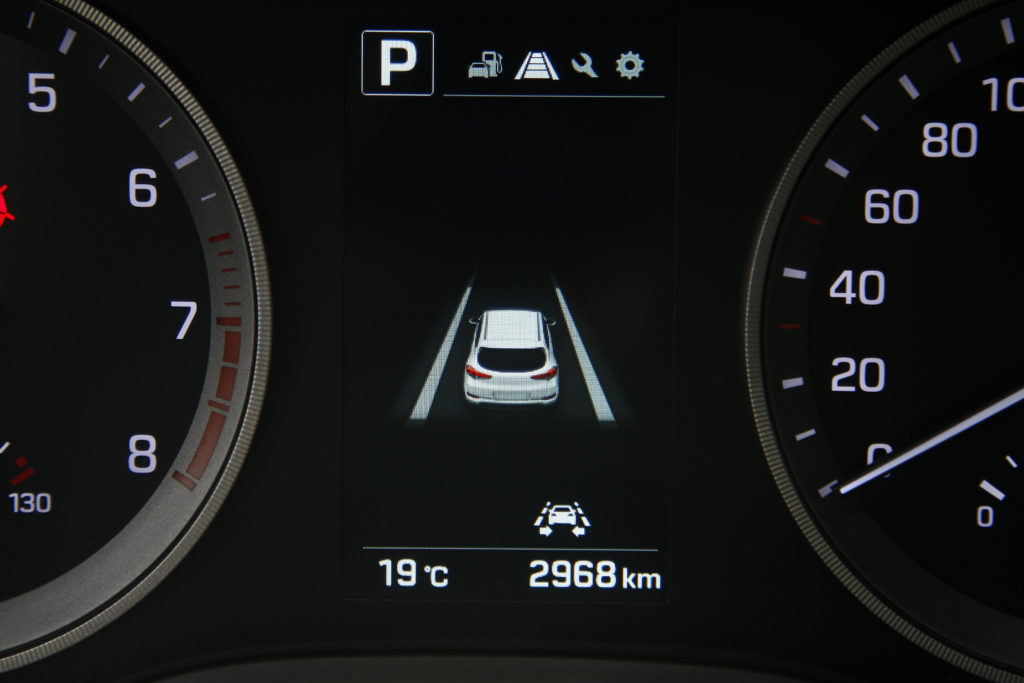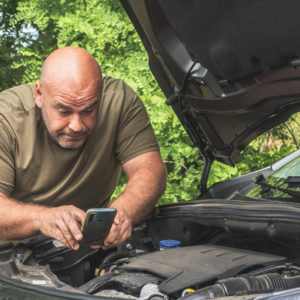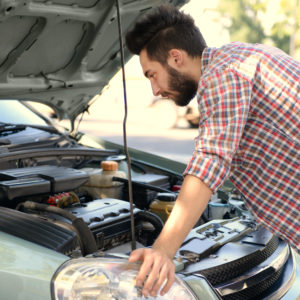You don’t need to be an automotive professional to recognize the hype surrounding self-driving cars. Everywhere you look, headlines are abuzz with talk of autonomous vehicles shaping the future of transportation.
But the truth is, self-driving technology is already here, in a sense, in the form of advanced driver assistance systems (ADAS). There are six levels of autonomy (starting at zero), and many of today’s ADAS features are considered level one or two.
High-end models aren’t the only vehicles equipped with ADAS, either. Nowadays, even economy cars, such as the 2022 Toyota Corolla, come with some form of ADAS.
So, industry professionals and vehicle owners need to be aware of how the technology can impact everyday auto repairs. If your car has ADAS, even something as simple as a windshield replacement could cause problems with one or more of the onboard systems.

What is ADAS Technology?
ADAS is the umbrella term for computerized systems that are designed to aid motorists with various safety-related driving tasks. The most common ADAS features include:
- Adaptive cruise control
- Lane-keeping assist
- Dynamic driving assist
- Forward collision warning
- Lane departure warning
- Blind spot warning
- Rear cross-traffic warning
- Parking obstruction warning
- Pedestrian detection
- Automatic emergency braking
- Automatic emergency steering
- Semi-automated and fully-automated parking assistance
- Remote parking
- Trailer assistance
- Surround view camera
- Automated high beams
- Night vision
- Driver monitoring
It’s important to note that there isn’t a standardized naming convention for ADAS features yet. As a result, what’s called automatic emergency braking on one car might be referred to as collision mitigation on another.
How Does ADAS Technology Work?
All of today’s ADAS technologies tend to rely on the same underlying principles. With ADAS, the vehicle receives input from various sensory devices. Then, an onboard network of computers (referred to as control modules) shares the data from those sensors. The computers then execute the necessary steps (i.e., sounding an alert, applying the brakes, etc.) to assist the driver.
All of the ADAS systems found in today’s vehicles will use one or more of the following technologies:
- Camera image processing: A camera, typically located directly behind the windshield glass, provides the vehicle with an image of the road ahead. Lane-keeping assist systems typically use a forward-facing camera to monitor lane markers on the road. Additional cameras may also be used for surround view monitoring.
- Radar: Radar modules detect objects near the vehicle using radio waves. For example, adaptive cruise control systems often use forward-facing radar to detect vehicles ahead.
- Ultrasound: Ultrasonic sensors emit sound waves that are used to measure the proximity between the vehicle and nearby objects. For instance, parking assist systems often use radar to detect stationary vehicles to the front and rear.
- Lidar: Light detection and ranging (lidar) is an emerging technology in automotive applications. Lidar sensors use short-range laser light pulses to scan the surrounding environment.
These technologies are used along with sensors from other onboard systems to help the vehicle create a detailed understanding of its surroundings through a process known as sensor fusion.
For example, an advanced adaptive cruise control system might receive input from a forward-facing camera and a radar module. Information from those sensory devices (and many of the vehicle’s other sensors) is shared over a data network with the computers that oversee systems, such as the engine and anti-lock brakes.
The computers then control the appropriate outputs (throttle, brakes, etc.) needed to help the vehicle maintain a safe distance from the car ahead.

How Does ADAS Impact Everyday Auto Repair?
Some vehicle owners (and even some automotive professionals) don’t recognize how much ADAS can impact everyday auto repairs. If part of an ADAS system is disturbed during a repair, there’s a good chance that the component will need to be calibrated afterward.
Anytime the angle or direction of one of the ADAS sensors is altered, the system might need to be calibrated. Calibration is often required after one or more of the following services:
- ADAS system repairs
- Windshield replacement
- Collision repairs
- Replacement of steering or suspension components
- Wheel alignment
With ADAS becoming more common all of the time, it’s important to remember that a calibration might be needed after performing any of the repairs listed above. Skipping the necessary calibrations could prevent important ADAS features from working properly, making the vehicle unsafe.
Unfortunately, many independent repair facilities don’t currently have the tools or training to perform ADAS calibrations. There are two calibration methods, static and dynamic, both of which require an OEM-level scan tool. Usually, static calibrations also require specialized (and expensive!) targets for aiming the sensors.
Because many shops aren’t up to speed on ADAS yet, consumers are often forced to go to the dealer for calibrations and repairs.
What to Keep in Mind Regarding Repairs
If your car has ADAS, you’ll want to keep that in mind when seeking certain auto repairs. For example, if you need to get your windshield replaced, you’ll want to be sure the replacement windshield will work with your car’s forward-facing camera (if equipped). You’ll also want to make sure you have a way to get the vehicle calibrated afterward if necessary.
ADAS is paving the way for fully-autonomous vehicles while also making today’s cars safer at the same time. But as with any new technology, ADAS requires some getting used to, both for vehicle owners and automotive professionals.
Where to Get Parts for a Faulty ADAS
Issues with a faulty ADAS should be addressed right away. Good thing CarParts.com has all the parts you need for all kinds of repairs. We have a selection of premium blind spot detection sensors, lane departure cameras, lane departure warning actuators, and more.
Navigate our website effortlessly, and try out our user-friendly vehicle selector tool to streamline your search. All you need to do is input your vehicle’s specific details for our system to narrow down your search results to compatible ADAS components
All our replacement parts come with a low-price guarantee, so you can get high-quality ADAS parts without exceeding your budget. We only source our products from trusted brands in the industry, and parts are screened by our team to ensure they meet industry standards.
Customer satisfaction is important to us at CarParts.com. If you need help choosing a replacement part for your ride, our team will happily offer assistance via our toll-free hotlines.
Explore our extensive collection now, and get your ADAS up and running again.
Any information provided on this Website is for informational purposes only and is not intended to replace consultation with a professional mechanic. The accuracy and timeliness of the information may change from the time of publication.
















